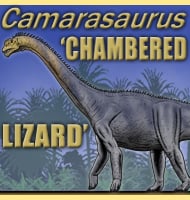Jiutaisaurus
In Depth Jiutaisaurus is a genus of sauropod dinosaur that lived in China during the Cretaceous. Further Reading - A New Sauropod Dinosaur from the Cretaceous of Jiutai, Jilin, China. - Global Geology 25(1): 6-9. - W. -H. Wu, Z. -M. Dong, Y. -W. Sun, C. -T. Li & T. Li - 2006.
